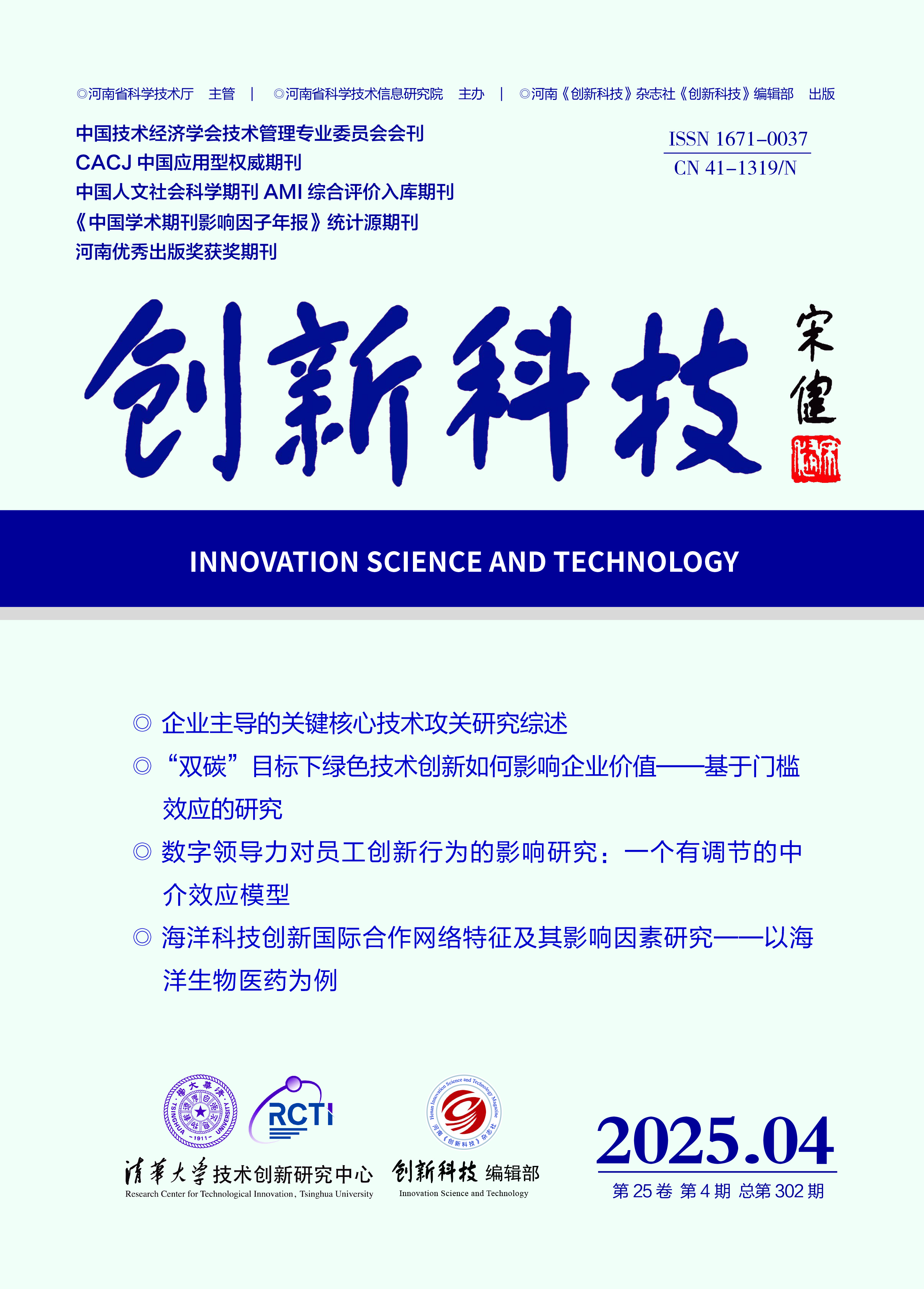INNOVATION SCIENCE AND TECHNOLOGY
Quick Search

All publication are peer-review
Peer review will take the from of double-blind review Judge objectively and impartially
There is no conflict of interest for the reviewer
Review articles shall be kept strictly confidential prior to publication
Enterprise's R&D and Innovation Management
Research on the Configuration Paths of Digital Service Transfor⁃ mation for Small and Medium-Sized Manufacturing Enterprises
—A Technology-Organization-Environment Framework Perspective
Zhou Yujuan1 , Ling Duanxin2 , Wang Xiuqin2 , Lv Xichen1 , Kong Qingwei3
(1.School of Economics and Management, Harbin University of Science and Technology, Harbin 150080, China; 2.China Academy of Industrial Internet, Beijing 100015, China; 3.Xi'an Institute of Applied Optics, Xi'an 710065, China)
Abstract: To explore the configuration paths of the digital service transformation for small and medium-sized manufacturing enterprises (SMEs), analyze the factors and mechanisms af⁃ fecting the transformation, and uncover the "black box" driving the service transformation through multi-factor interconnections, this study selects a sample of manufacturing SMEs listed on the stock market as case studies. Based on the "Technology-Organization-Environment" (TOE) framework, the study identifies and analyzes the key driving factors that these enterprises encounter in the process of achieving digital service transformation. Through a holistic analysis, the paper categorizes the antecedent conditions driving the transformation into six dimensions, constructing a factor-driven model for manufacturing SMEs' digital service transformation. Fur⁃ thermore, the study uses the "Fuzzy-set Qualitative Comparative Analysis" (fsQCA) method to systematically explore the causal relationships between different factor configurations. The find⁃ ings reveal that no single factor can explain the digital service transformation of enterprises inde⁃ pendently; rather, a combination of multiple factors is needed. The configuration paths for achieving a high level of digital service transformation are divided into two types: one driven by technology empowerment and absorption capacity, and the other driven by organizational support and innovation capability. These paths highlight the crucial roles of digital technology applica⁃ tion, the improvement of absorption capacity, the support for innovation capacity, and the effec⁃tive allocation of organizational resources in the transformation process. In situations where the levels of digital technology and technological innovation are high, along with strong absorption capacity, integration capacity and market competition can enhance the transformation perfor⁃ mance in an "equivalent but different" way. For cases of non-high digital service transformation, the paths are characterized by a focus on integration energy and market competition, as well as a lack of technology and absorption capacity. To better understand the regional differences in manufacturing SMEs' digital service transformation, the study conducts a heterogeneity analysis of transformation paths across various regions. The results show that in the eastern region, the main transformation path is driven by technology empowerment and absorption capacity, while in the western region, the only path is environmentally driven. In the central region, the main path is characterized by a lack of digital technology capacity. This research reveals the complex con⁃ figurational effects between multiple driving factors of manufacturing SMEs' digital service trans⁃ formation from an overall and regional multidimensional perspective, emphasizing the interaction and heterogeneity among these factors during the transformation. On one hand, it expands re⁃ search on the collaborative effects of multiple factors on manufacturing SMEs' digital service transformation, providing direction for future studies on multi-factor collaboration mechanisms and effects, and offering theoretical support for understanding how these SMEs can address the "servitization paradox" in the context of the digital economy. On the other hand, it uncovers the collaborative and substitution relationships between technological, organizational, and environ⁃ mental factors in the transformation process, offering theoretical guidance for the precise alloca⁃ tion of enterprise resources and providing practical insights for promoting the high-quality devel⁃ opment of manufacturing SMEs.
Key words: small and medium-sized manufacturing enterprises; digital servitization; TOE; fsQCA; configuration paths